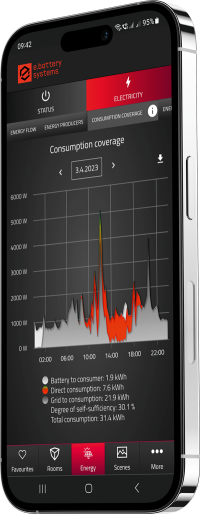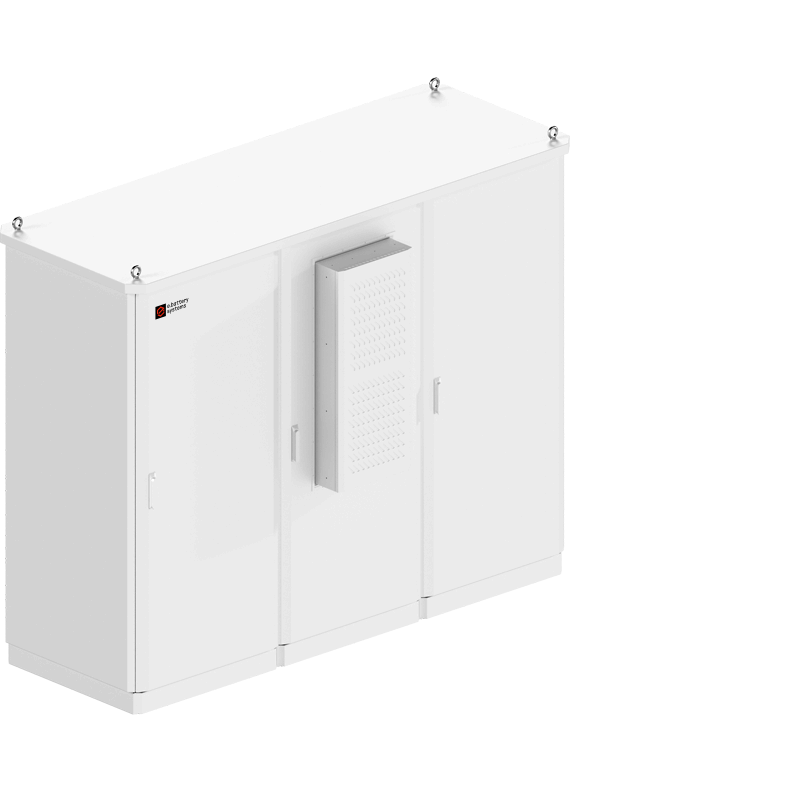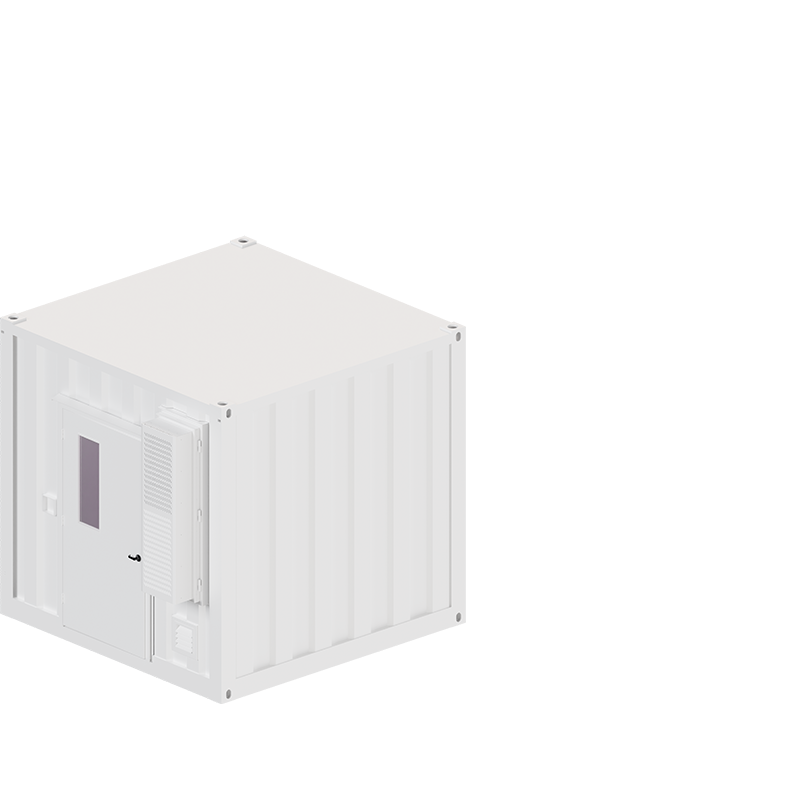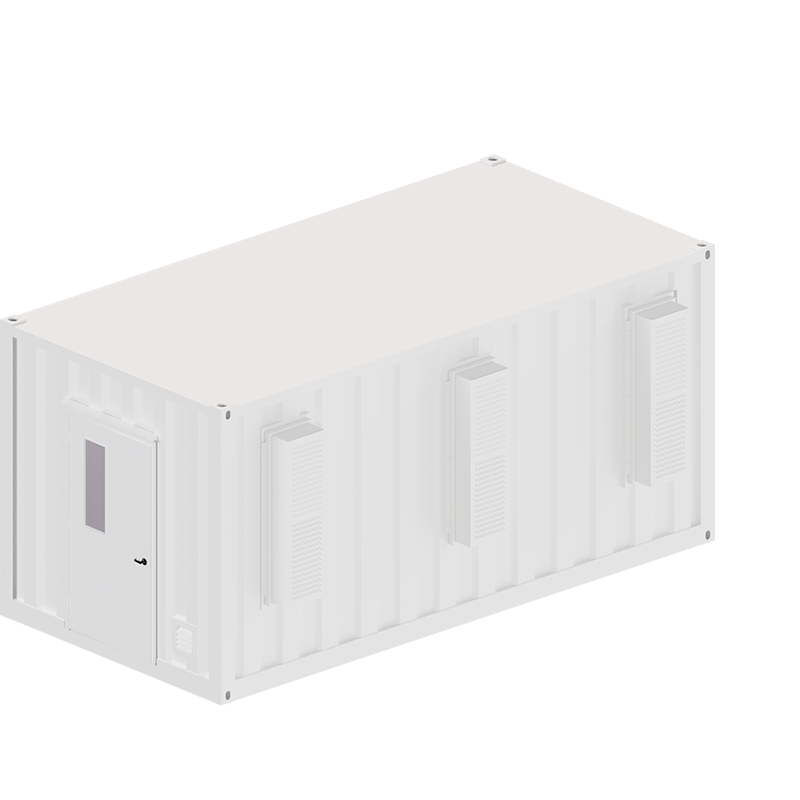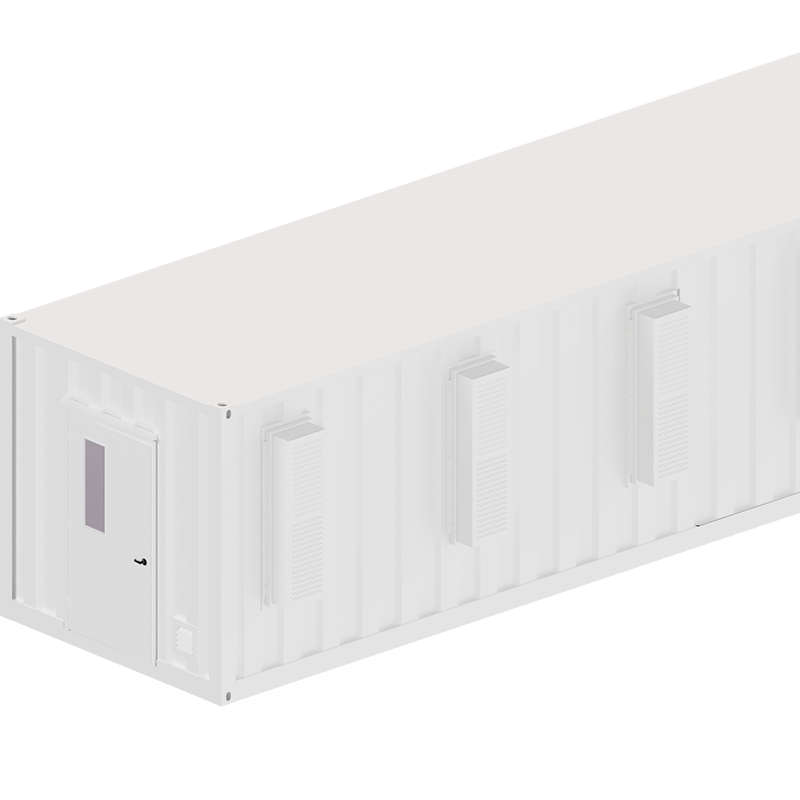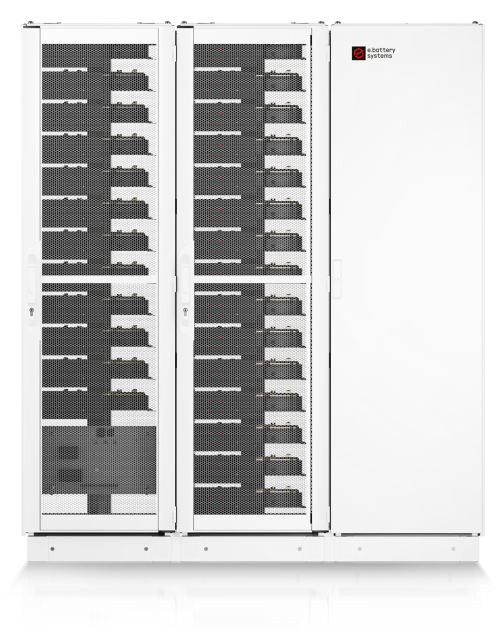
→ 30 % cost savings
→ 5 % more battery capacity
→ 100 % fail-safe
→ Power supply in case of power cuts
→ 70 % reduced energy waste
→ 7 years guarantee
→ A self-sufficient energy supply
→ 95 % efficiency
→ Intelligent charge management
→ Kicks in during power peaks
→ Industry and manufacturing
→ Electromobility
→ Building sites or mining
→ Telecommunications
→ Residential complexes
→ Quarter storage
→ Governmental regulations around CO2 emissions have increased dramatically.
→ Roll-out can help to reach worldwide climate goals.
→ The footprint of every lithium-ion e-car battery can be improved.
→ The lifespan of the batteries is being extended until recycling.
→ Better EUR/kWh price situation by deploying 'used' batteries.
→ Significant governmental support existing and more to be provided.
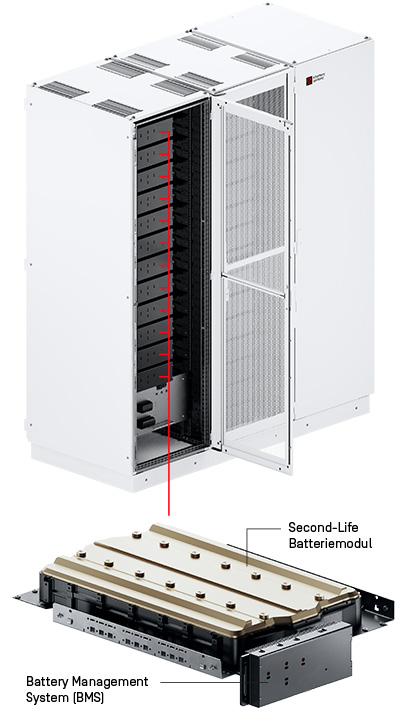
We are setting the new standard for large-scale battery storage systems.
Track and control your energy consumption, energy sources and energy storage system in real time with our energy management system.
Accessible anytime, anywhere.
